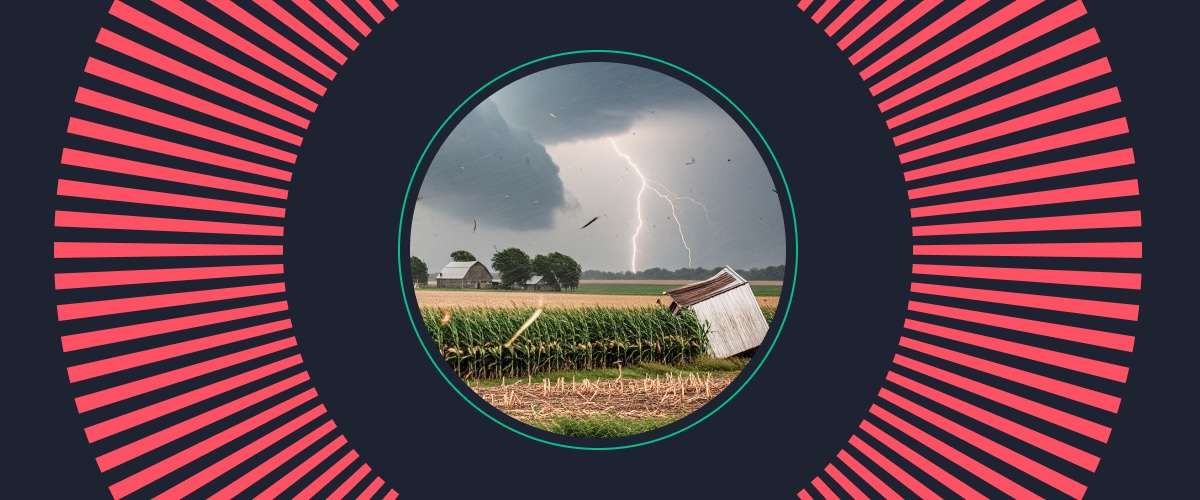

Recent insurance filings across the Midwest reveal a significant industry response to the increasing frequency and severity of severe convective storms, including hail and wind events. Insurers are leveraging advanced catastrophe models, such as those from RMS and Karen Clark & Company, to better assess and price storm-related risks. Many filings show substantial rate increases, particularly in states like Kansas, North Dakota, and Missouri, with some filings affecting tens of thousands of policyholders. Regulatory scrutiny is high, with departments of insurance frequently requesting detailed support for catastrophe modeling and storm risk provisions. The filings collectively indicate a shift toward more granular, peril-specific risk assessment and pricing strategies.
1. Widespread use of catastrophe modeling
Multiple carriers, including Chubb, American Family, Progressive, and Munich Re, are incorporating advanced catastrophe models (RMS, KCC) to assess risk from severe convective storms and hail. These models are used to develop territory-specific rates and to justify significant premium increases.
2. Substantial rate increases in high-risk states
Kansas, North Dakota, and Missouri have seen some of the largest rate increases, with filings from American Family, Progressive, and Cincinnati Insurance showing double-digit or higher percentage increases. These are often justified by modeled losses and recent adverse experience from convective storms.
3. Regulatory focus on storm risk and modeling
State insurance departments are closely scrutinizing filings for the adequacy and transparency of catastrophe modeling. Objections and requests for additional data are common, especially regarding the calibration and validation of models for wind, hail, and convective storm perils.
4. New and revised deductible structures
Several filings introduce or revise wind/hail deductibles and coverage forms, reflecting a trend toward shifting more risk to policyholders in high-risk areas. This is seen in filings from AIG, State Farm, and others.
5. Large-scale impact on policyholders
Some filings affect very large books of business, with American Family’s Kansas filing impacting nearly 50,000 policyholders and Progressive’s Kansas filing affecting over 11,000. The scale of these changes underscores the industry’s broad response to convective storm risk.
Notes on selected filings:
• AMFC-133722886 (Kansas, American Family): Uses KCC Severe Convective Storm Model; large-scale rate increase driven by hail risk modeling.
• AMSI-133804106 (Kansas, Progressive): Nearly 70% rate increase; detailed use of modeled SCS loss data for wind/hail.
• AMFC-133895025 (North Dakota, American Family): 29% rate increase; incorporates KCC wind/hail model and technical documentation.
• CNNB-134366425 & CNNB-134366403 (Missouri, Cincinnati): Double-digit rate increases; filings cite increased loss costs from severe convective storms.
• FAIG-134150238 (Indiana, Farmers): 23% rate increase; includes catastrophe adjustment analysis and modeling.
• AMSI-134040417 (Ohio, Progressive): 17% rate increase; uses AIR and KCC models for storm risk.
• AMMH-134165866 & AMMH-134183102 (Indiana/Ohio, Munich): Both filings reference catastrophe modeling and increased storm/hail losses.
• Model-driven pricing: The industry is moving toward model-driven, peril-specific pricing, with a focus on wind and hail risk. Competitors are investing in third-party models and technical documentation to support rate changes.
• Regulatory engagement: Insurers should anticipate and prepare for detailed regulatory scrutiny of catastrophe modeling, including requests for calibration, validation, and transparency in model use.
• Product structure adjustments: There is a trend toward higher deductibles and revised coverage forms for wind/hail, shifting some risk to policyholders and potentially reducing loss volatility for insurers.
• Market impact: Large-scale rate increases and coverage changes may impact retention and new business, especially in high-risk geographies. Competitors should monitor market response and adjust distribution and communication strategies accordingly.
• Data and documentation: Comprehensive, well-documented actuarial and modeling support is essential for successful filings, especially as climate variability and storm frequency increase.
The widespread adoption of advanced catastrophe modeling and substantial rate increases across the Midwest signal a fundamental shift in how the insurance industry approaches severe convective storm risk. As climate variability continues to drive increased storm frequency and severity, insurers who can access comprehensive, real-time competitive intelligence will have a decisive advantage in pricing accuracy, regulatory compliance, and market positioning. The filings analyzed in this report represent just a fraction of the strategic moves happening across all 50 states—moves that require constant monitoring to stay competitive. With regulatory scrutiny intensifying and market dynamics evolving rapidly, insurance professionals need more than historical data; they need the complete picture of how competitors are responding to these emerging risks.
• ACEH-133919506 (Chubb, Michigan)
• AMMH-134200555 (Munich, Indiana)
• AMMH-134165866 (Munich, Indiana)
• AMSI-134040417 (Progressive, Ohio)
• SFMA-134239055 (State Farm, Kansas)
• CNNB-134366425 (Cincinnati, Missouri)
• AMFC-133895025 (American Family, North Dakota)
• CNNB-134366403 (Cincinnati, Missouri)
• AMSI-133804106 (Progressive, Kansas)
• AMMH-134183102 (Munich, Ohio)
• AMFC-133722886 (American Family, Kansas)
• APCG-134251447 (AIG, Missouri)
• GECC-134406571 (Berkshire Hathaway/GEICO, Kansas)
• FAIG-134150238 (Farmers, Indiana)
• AMMH-133992797 (Munich, Ohio)
This report is based on a review of recent insurance filings in the Midwest that discuss severe convective storms, hail, and catastrophe modeling. The filings were selected for their scale, complexity, and relevance to emerging industry trends.